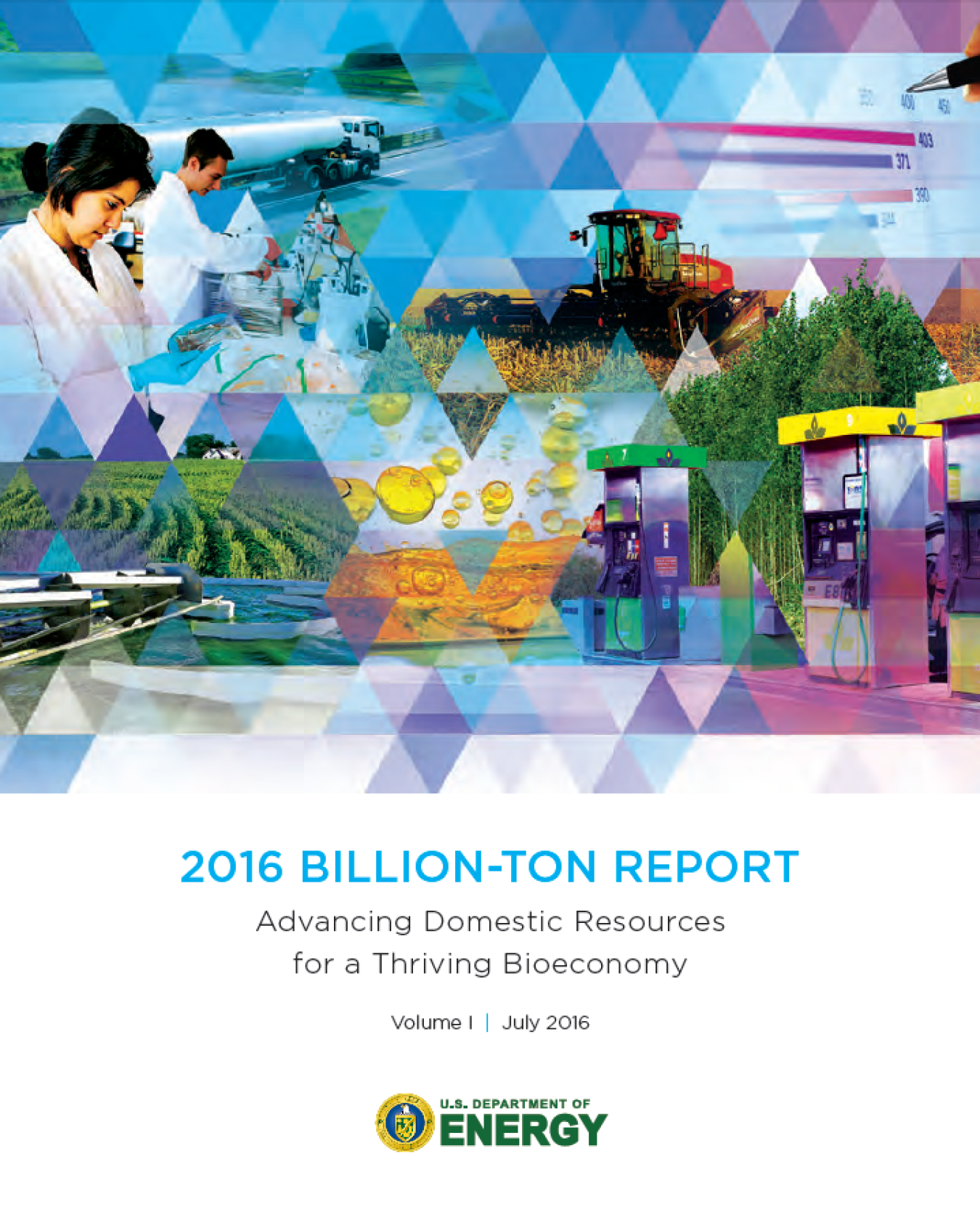Note: To access the most recent Billion-Ton study in the series, the 2023 Billion-Ton Report, visit the 2023 Billion-Ton website for the latest information, data, and resources. Continue on this page to access the previously released reports from 2016, 2011, and 2005.
The Billion-Ton study series includes four national biomass resource assessments commissioned by the U.S. Department of Energy Bioenergy Technologies Office, beginning in 2005, with the latest release in 2023. Each report builds upon the last, and takes into account new data and information, as well as additional factors and variables.
The 2016 Billion-Ton Report: Advancing Domestic Resources for a Thriving Bioeconomy is the third assessment report in the series. This third edition concludes that the United States has the future potential to produce at least 1 billion dry tons of biomass resources (composed of agricultural, forestry, waste, and algal materials) on an annual basis without adversely affecting the environment. The report focuses on the importance of environmental renewability and explores environmental and economic modeling of feedstocks in various scenarios.
Watch the 2016 Billion-Ton overview video to learn more.
Learn more about the most recent 2023 Billion-Ton Report.
View Past Reports
Related Resources
- 2016 Billion-Ton Report : Volume 1 Fact Sheets
- 2016 Billion-Ton Report : Volume 2 Fact Sheets
- Volume 1: Maps and Data on the Bioenergy Knowledge Discovery Framework
- Volume 2: Environmental Sustainability Effects of Select Scenarios from Volume 1
- Volume 2: Sustainability Datasets on the Bioenergy Knowledge Discovery Framework


